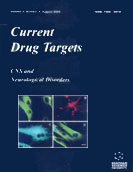Abstract
Locomotion results from the activity in neural networks in the spinal cord that together with sensory and descending inputs generate coordinated motor outputs. Descending inputs include glutamatergic, monoaminergic, and peptidergic pathways. Spinal injuries interrupt these descending pathways, resulting in the disruption or loss of function. Drugs that target these endogenous transmitter systems have been used to improve function after spinal injury. However, individual drugs can have beneficial or deleterious effects in different studies and thus there is little consensus on optimal pharmacological strategies. The variability may be influenced by changes introduced by the type of lesion (complete or partial), time after injury, or the lack of specific ligands that target specific transmitter systems. It is now recognised that these transmitter systems do not necessarily act in isolation, but can interact to evoke additive, inhibitory, or novel metamodulatory effects. Meta interactions mean that differing chemical environments in lesioned spinal cords could influence drug effects. The spinal cord also exhibits injury-induced changes, which could alter the chemical environment and functional properties over time. While they have not been considered in pharmacological approaches to spinal injury, interactive and adaptive changes could influence the effects of spinal lesions and therapeutic interventions. The properties of endogenous transmitter systems in spinal locomotor networks before and after spinal lesions need to be understood, and pharmacological tools that target specific functional aspects need to be developed.
Keywords: spinal lesion, paralysis, metamodulation, plasticity, neuropeptide, amines
 4
4

















